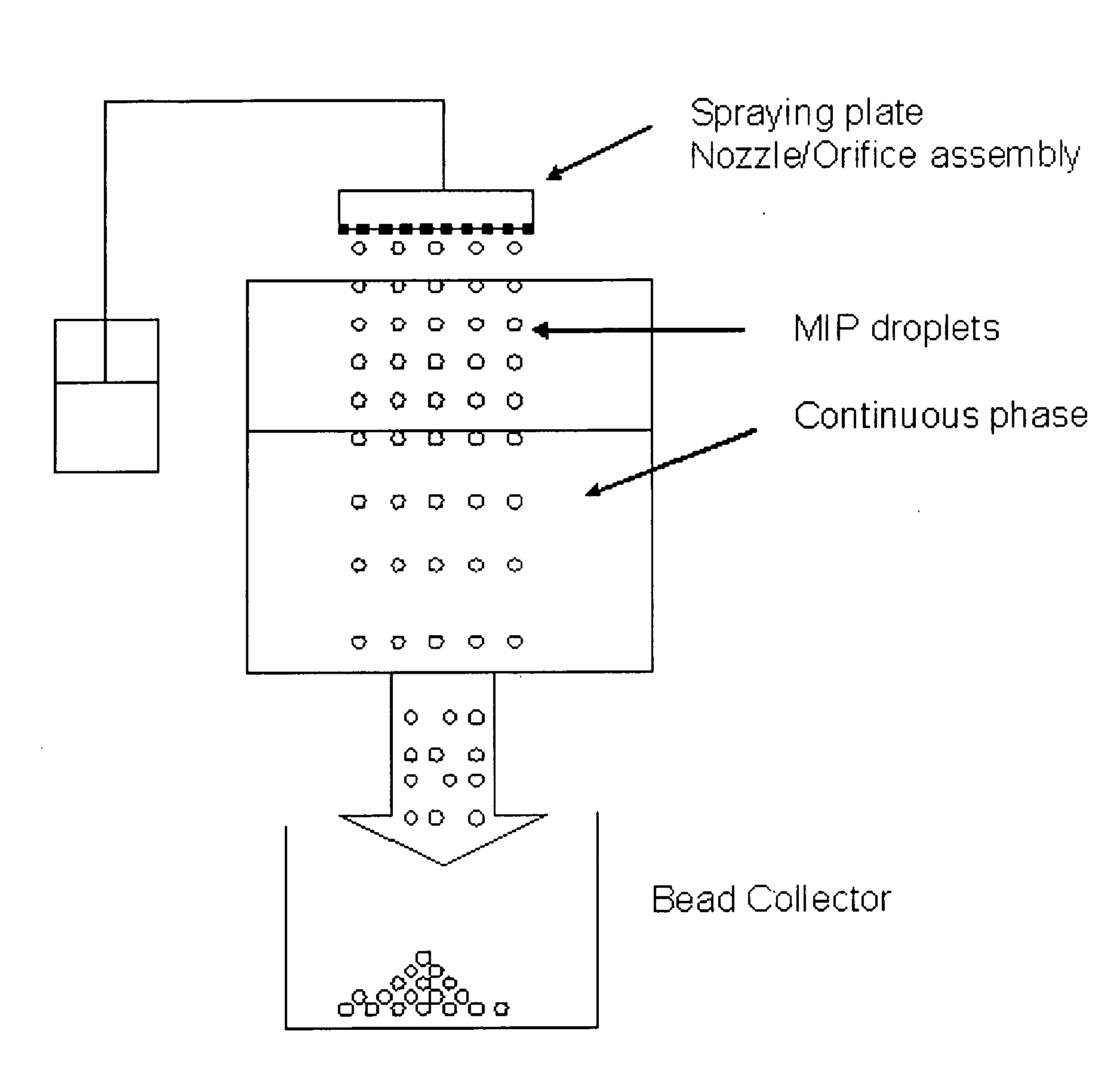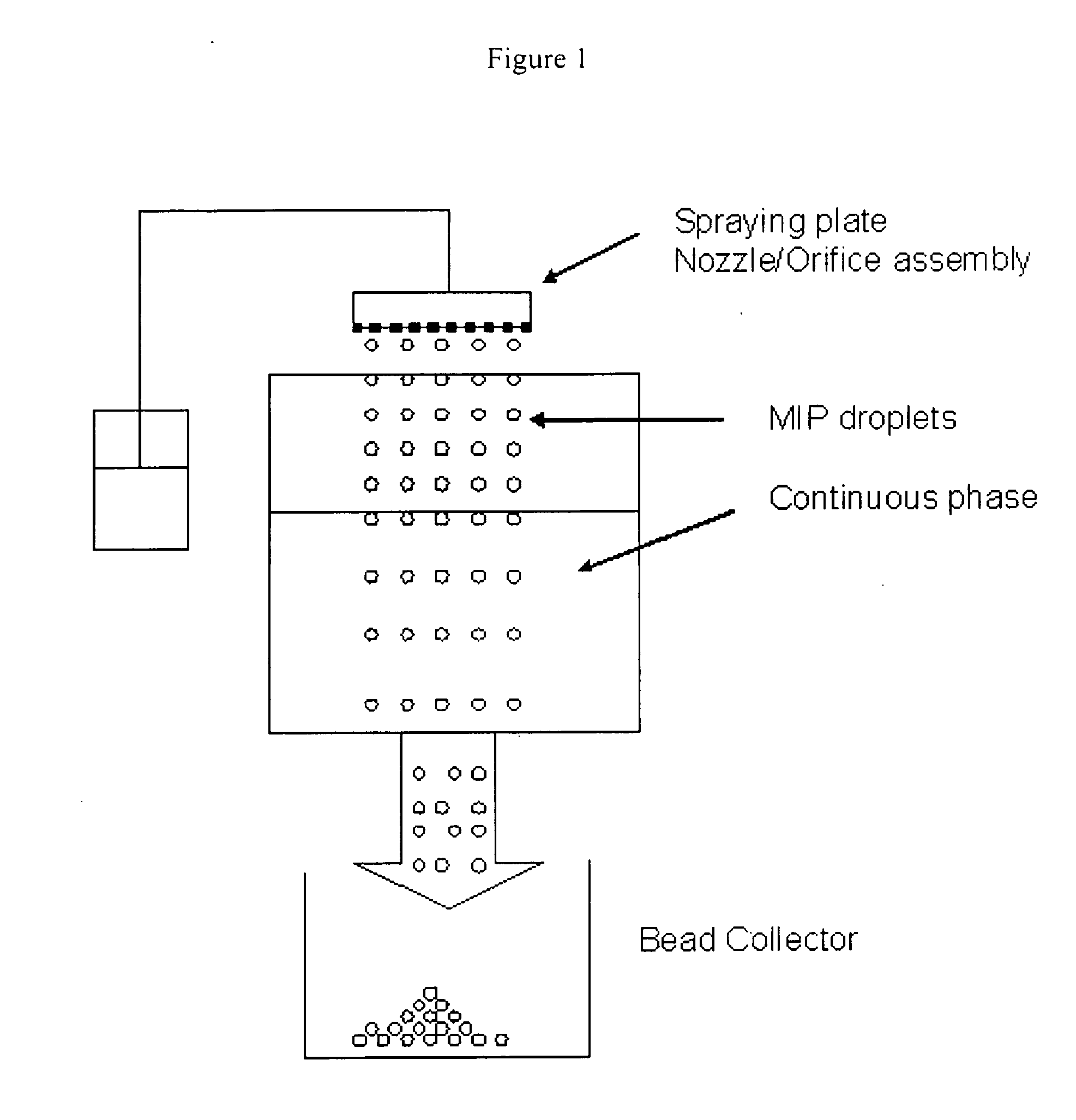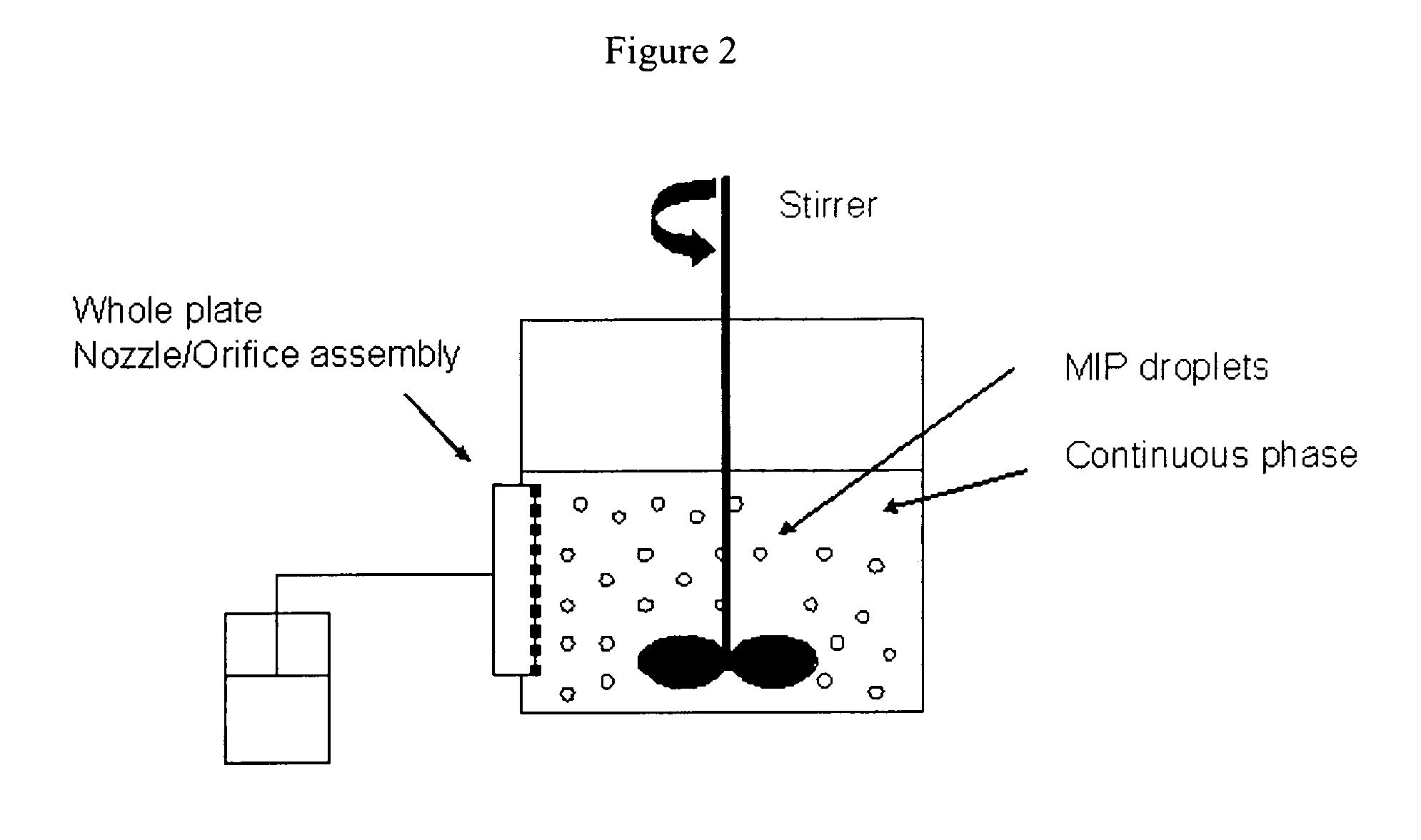Monodisperse Molecularly Imprinted Polymer Beads
a molecular imprinting and polymer technology, applied in the direction of organic compounds/hydrides/coordination complex catalysts, physical/chemical process catalysts, chemical apparatuses and processes, etc., can solve the problems of non-uniform granules, poor particle morphology, etc., to achieve poor particle morphology, poor control of process parameters, and low yield
- Summary
- Abstract
- Description
- Claims
- Application Information
AI Technical Summary
Benefits of technology
Problems solved by technology
Method used
Image
Examples
example 1
Nozzle Bead Formation
[0036]A monomer mixture consisting of 1 mmol atrazine, 4 mmol methaciylic acid, 0.5 mmol azoisobutyronitrile and 20 mmol ethyleneglycol dimethacrylate and toluene as solvent. After complete dissolution of the components, the mixture is bubbled with nitrogen for 5 minutes. A continuous phase is prepared consisting of water containing 2% polyvinylalcohol. The monomer mixture is forced through a tiny orifice in the form of an injection nozzle where it disintegrates into small droplets. These droplets then enter into the continuous phase and the continuous phase is heated to 65° C. and the droplets of the monomer mixture polymerize to MIP beads. The MIP beads obtained are uniform and spherical.
example 2
Cross Membrane Emulsification
[0037]A monomer mixture is prepared consisting of 1 mmol atrazine, 4 mmol methacrylic acid, 0.5 mmol azoisobutyronitrile and 20 mmol ethyleneglycol dimethacrylate and toluene as solvent. After complete dissolution of the components, the mixture is bubbled with nitrogen for 5 minutes. A continuous phase is prepared consisting of water containing 2% polyvinylalcohol. The monomer mixture is forced through a porous membrane tube and droplets formed are continuously transported by a cross-flow of the continuous phase and the continuous phase is heated to 65° C. and the droplets of the monomer mixture polymerize to MIP beads. The MIP beads obtained are uniform and spherical.
example 3
[0038]A molecularly imprinted polymer monomer mixture is prepared consisting of 1 mmol atrazine, 4 mmol methacrylic acid, 0.5 mmol azoisobutyronitrile and 20 mmol ethyleneglycol dimethacrylate and toluene as solvent. After complete dissolution of the components, the mixture is bubbled with nitrogen for 5 minutes. A continuous phase is prepared consisting of water containing 2% polyvinylalcohol. The imprinting mixture is taken up with a dispensing device (e.g. Mini kit K-125 from SPG Technology, Japan) and pressed through a controlled pore membrane into the continuous phase. Then the continuous phase containing the monomer droplets of the mixture is heated to 65° C. and the droplets of the monomer mixture polymerize to MIP beads The MIP beads obtained are uniform and spherical.
PUM
| Property | Measurement | Unit |
|---|---|---|
| Particle size distribution | aaaaa | aaaaa |
| Size distribution | aaaaa | aaaaa |
| Pore size | aaaaa | aaaaa |
Abstract
Description
Claims
Application Information
 Login to View More
Login to View More - R&D
- Intellectual Property
- Life Sciences
- Materials
- Tech Scout
- Unparalleled Data Quality
- Higher Quality Content
- 60% Fewer Hallucinations
Browse by: Latest US Patents, China's latest patents, Technical Efficacy Thesaurus, Application Domain, Technology Topic, Popular Technical Reports.
© 2025 PatSnap. All rights reserved.Legal|Privacy policy|Modern Slavery Act Transparency Statement|Sitemap|About US| Contact US: help@patsnap.com



